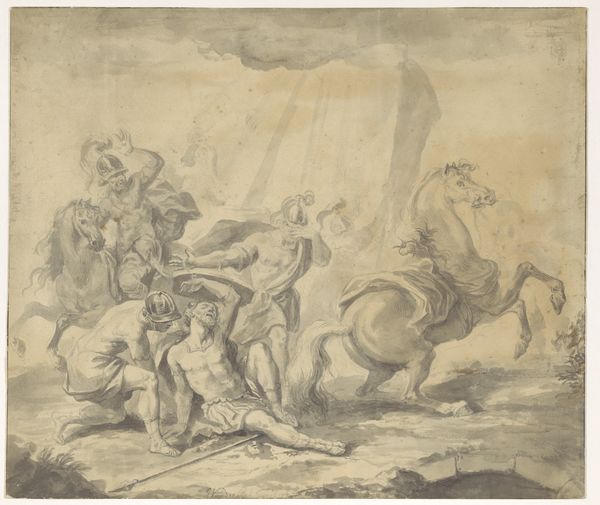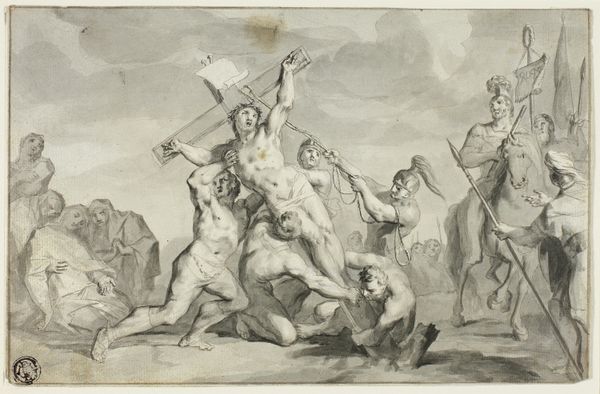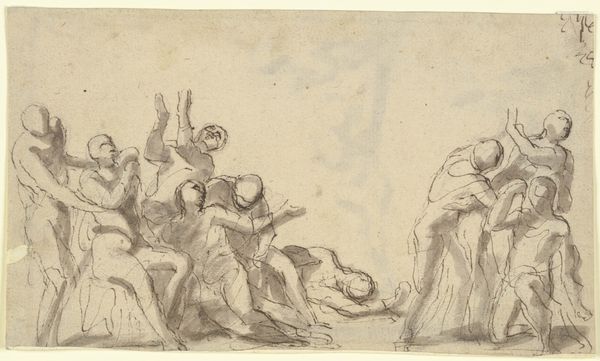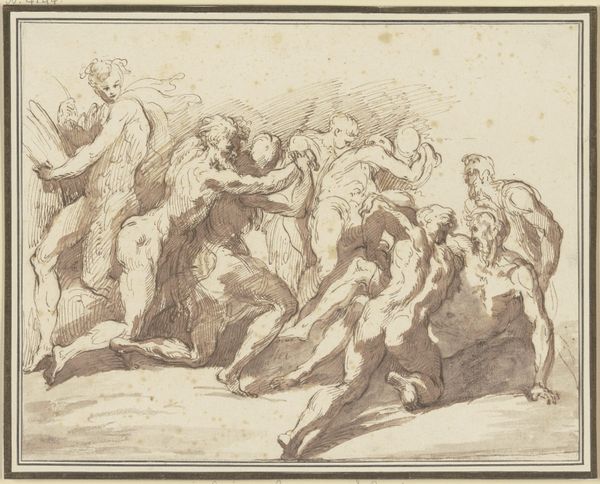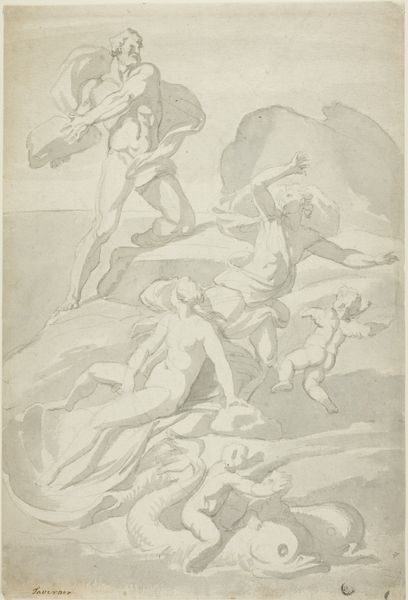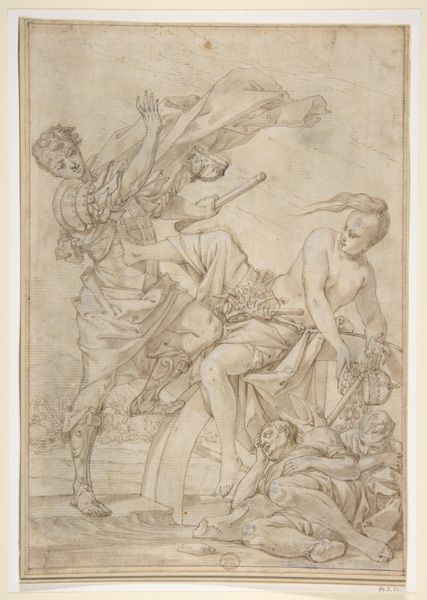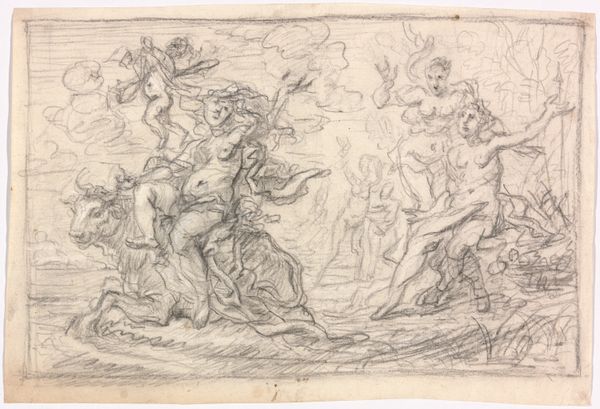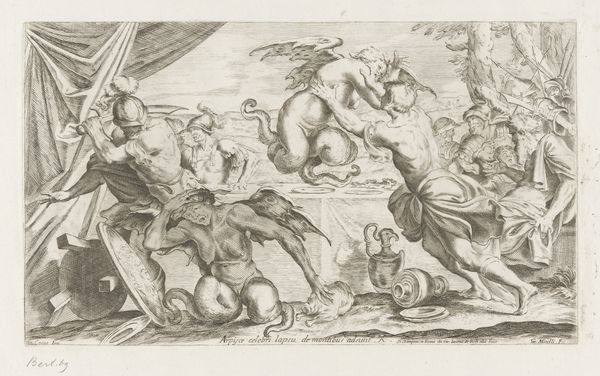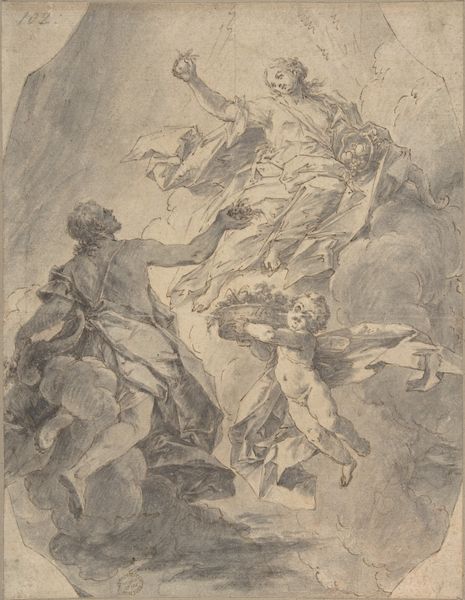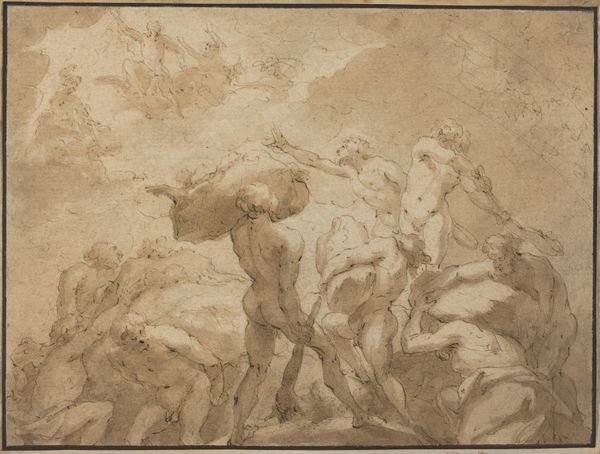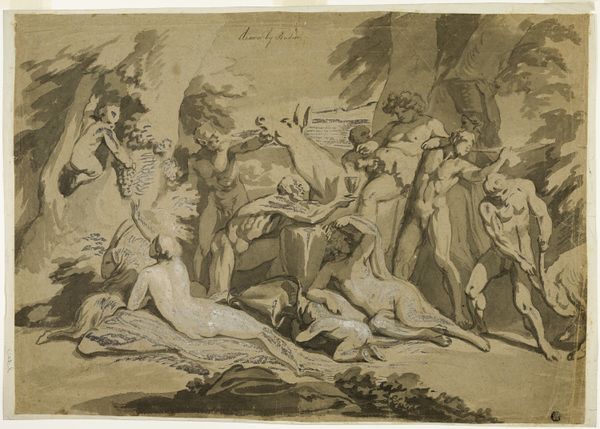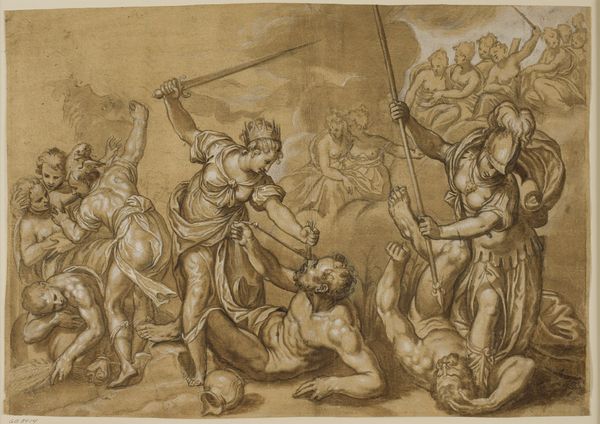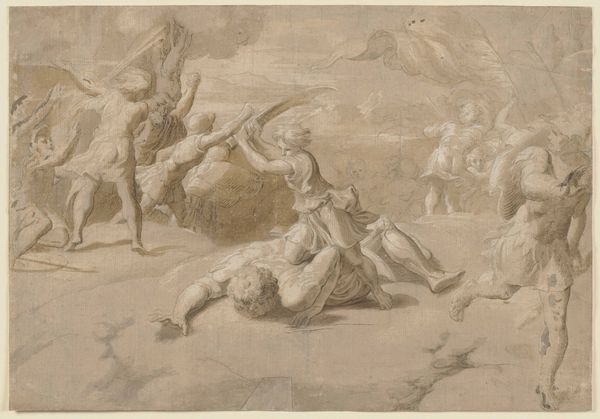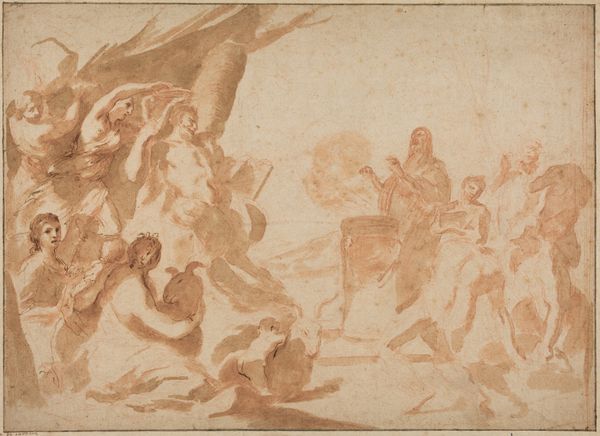
Ceiling Studies of a Prophet and a Putto Seen from Below c. 1602 - 1607
0:00
0:00
drawing
#
drawing
#
amateur sketch
#
toned paper
#
light pencil work
#
pencil sketch
#
incomplete sketchy
#
personal sketchbook
#
pencil drawing
#
ink drawing experimentation
#
pen-ink sketch
#
pencil work
Dimensions: sheet: 22 x 30.3 cm (8 11/16 x 11 15/16 in.)
Copyright: National Gallery of Art: CC0 1.0
Giulio Cesare Procaccini made this drawing, "Ceiling Studies of a Prophet and a Putto Seen from Below," using graphite on paper. It offers an intimate look into the artistic process behind creating the grand ceiling frescoes that were popular in Italy during the late 16th and early 17th centuries. Procaccini, working in a devoutly Catholic northern Italy, uses foreshortening to create the illusion that figures are floating above the viewer. This was a technique championed by the dominant institutions of the time, most notably the Catholic Church, as a way to inspire awe and devotion. Artists in this period were expected to create works that glorified God and upheld religious doctrine. As historians, we can look at workshop records to understand the collaboration between artists and their assistants in executing these complex commissions. We can also examine theological texts and patronage agreements to appreciate the cultural and institutional forces that shaped Procaccini's art. The visual language, the way it was produced, and the spaces it was intended for, all reinforce the social structures of its time.
Comments
No comments
Be the first to comment and join the conversation on the ultimate creative platform.
